Filed under: RTI, Training, Workshops | Tags: Digital Imaging, RTI, RTIViewer, Training, Workshops
 Marlin Lum is the Imaging Director at Cultural Heritage Imaging (CHI) and a member of the CHI training team.
Marlin Lum is the Imaging Director at Cultural Heritage Imaging (CHI) and a member of the CHI training team.
I thought I’d take a few moments to decode what it’s like to be an instructor in one of our RTI training classes. Like anything else, there’s a certain level of planning, intention, and positive enthusiasm that I expect from myself (and from anyone enrolled). I do my best to pass this on to everyone who elects to give us their valuable time. I truly enjoy teaching at this level. I see these training sessions as a unique opportunity to pass on my knowledge in a form that can help create conditions primed for discoveries as well as to make new friends.
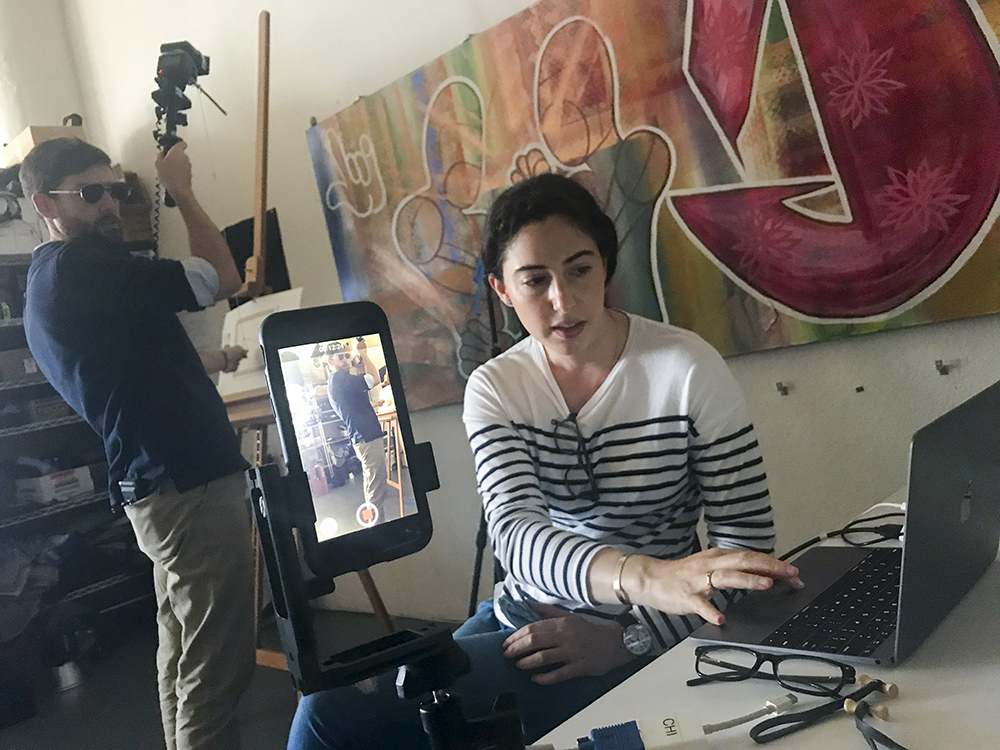
RTI capture with iPhone in tow to track one of those special photographic moments. (Aviator sun glasses optional.)
CHI RTI training (as well as our photogrammetry class) simply means spending four days conveying photo DIY geekiness to a usually very enthusiastic, and sometimes even rowdy, motley crew of professors, scholars, conservation professionals, archaeologists, and pro photographers. (By the way, just so you know, it’s usually the archaeologists and the pro shooters who can hold the most liquor.) All of these folks, and everyone who walks into one of our trainings, is ultra-talented, focused, and very motivated to succeed. As you might guess, this makes my job significantly easier as well as seemingly more important. At least the furious note-taking in most of my hands-on demos would lead me to think this. As I always state on day one, hour one: “I make it my goal to make you successful (at least photographically).”
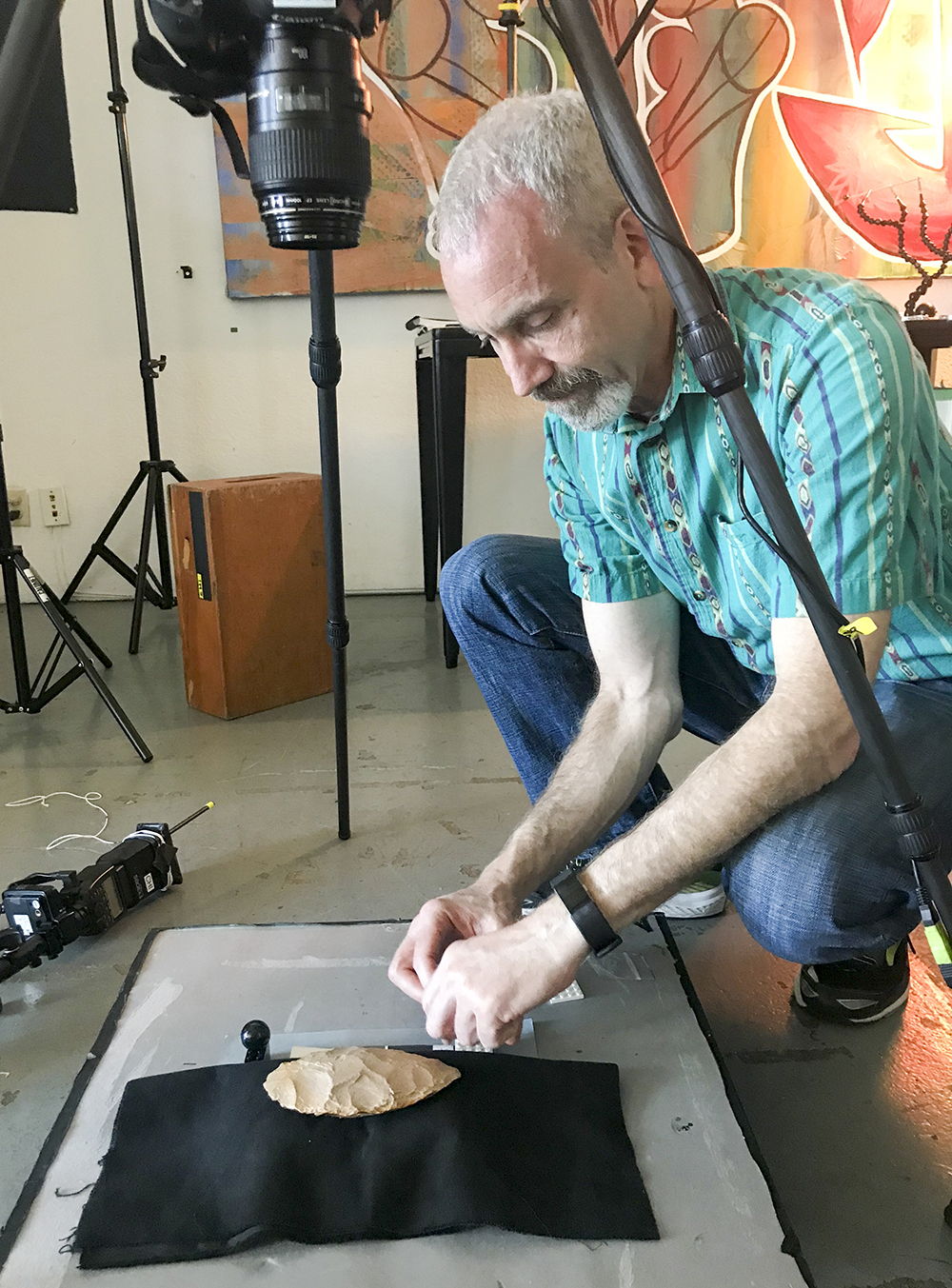
Got spheres? Get on the plane! Make sure those spheres are on same plane as the object. Place them carefully so they do not move and are always in focus.
Helping these trainees from the bus stop to the f-stop and along their way to making discoveries is not only a privilege but something of a rush. More than once I have witnessed the birth of an important discovery. I once watched a conservator realize that a Mayan lead ingot sitting on the bench actually had numerous coded “knot” inscriptions, though they were seemingly invisible to the human eye. RTI revealed this fairly matter of factly. I’ve heard the shriek of conservation staff as RTI revealed a previously hidden but somewhat “suspect” under-painting. I once heard an Egyptologist glyph expert read aloud, then carefully re-read, a good fortune spell. Apparently, the original person who had paid for the spell got taken, because RTI revealed that the original owner’s name had been scratched away and re-etched with a new dude’s name. I imagine that was a fairly common event. Wait till the guy dies, then sneak over there, scratch out his name, and write yours. Boom, check, all done, sweetie. All right there in stone — can’t deny that when the judge points a finger at you. The oohs and aahs I hear never disappoint.
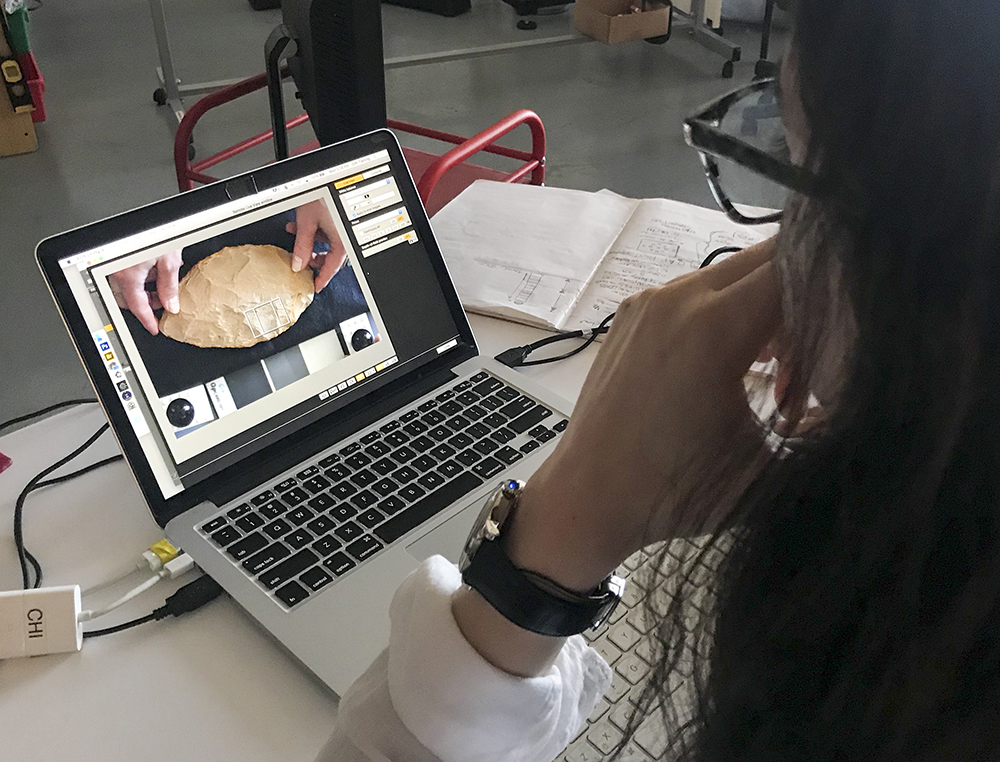
Setting up the object for proper RTI capture can take a bit of time, but using Live View mode can help your troubles go away.
Here’s the gist: I get fired up when I see you guys get fired up. RTI has the potential to inspire. Materials and objects that you didn’t think were worth imaging suddenly land on the request list. One down side: I heard a pro shooter from a large institution complain that he didn’t need any more work (oh, sorry).
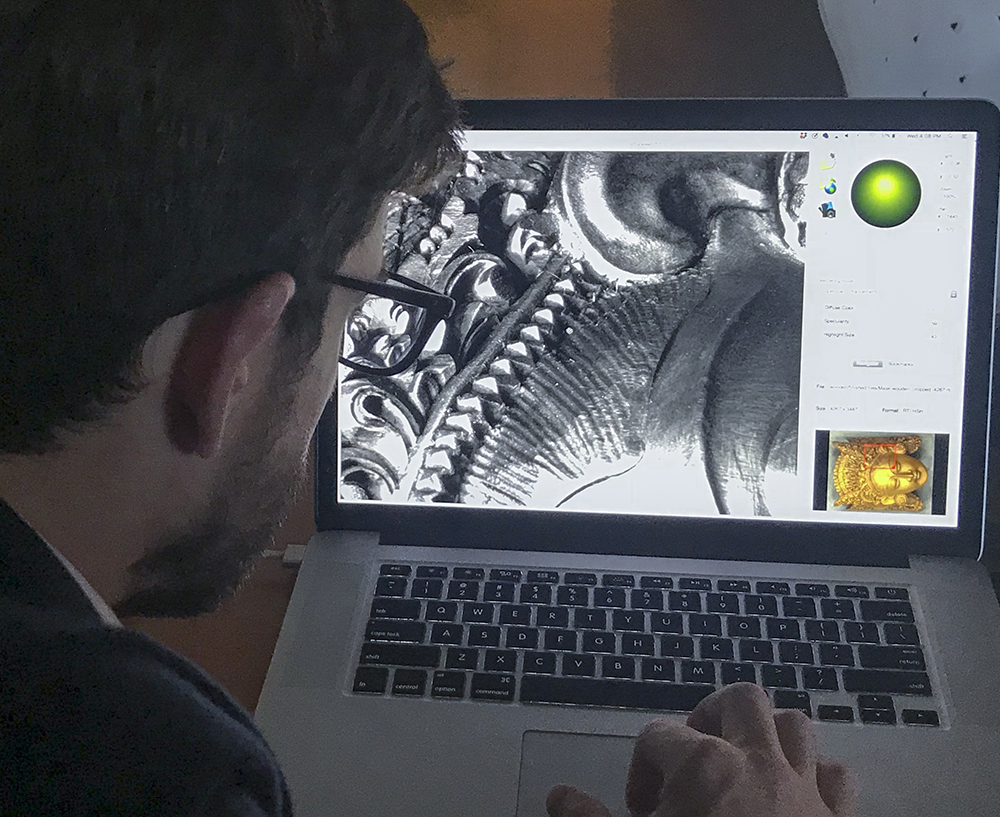
Use the RTIViewer to look at the details.
Just recently we taught an RTI class at the CHI studio (the photos in this blog are from that class). I’m not sure that any real discoveries were made, because we don’t have glyphs, ancient relics, masterpieces, or any “weird” non-provenance stuff from eBay lying around. However, I can vouch for the fact that I had a great time meeting cool new professionals, watching them engaged in what they do best, and then seeing them walk out the door, doing it better than before. Yup, I did write that. It’s in our best interest at CHI to make sure that you’re successful taking RTI (or photogrammetry) back to your professional crew.
Filed under: Guest Blogger, Technology, Training, Workshops | Tags: 3D data, conservation, photogrammetry, Training
Lauren Fair is Associate Objects Conservator at Winterthur Museum, Garden, & Library in Buffalo, New York. She also serves as Assistant Affiliated Faculty for the Winterthur/University of Delaware Program in Art Conservation (WUDPAC). Lauren was a participant in CHI’s NEH grant-sponsored 4-day training class in photogrammetry, August 8-11, 2016 at Buffalo State College. She posted an account of her experience in the class in her own blog, “A Conservation Affair.” Here is an excerpt from her fine post.
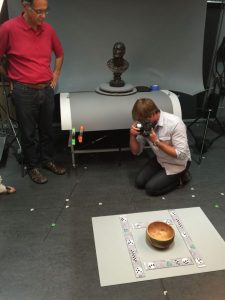 I have discovered the perfect way to decompress after a four-day intensive seminar on 3D photogrammetry: go to your friend’s cabin on a small island in a remote part of Canada. While you take in the fresh air and quiet of nature, you can then reflect on all that you have shoved into your brain in the past week – and feel pretty good about it!
I have discovered the perfect way to decompress after a four-day intensive seminar on 3D photogrammetry: go to your friend’s cabin on a small island in a remote part of Canada. While you take in the fresh air and quiet of nature, you can then reflect on all that you have shoved into your brain in the past week – and feel pretty good about it!
The Cultural Heritage Imaging (CHI) team – Mark, Carla, and Marlin – have done it again, in that they have taken their brilliance and passion for photography, cultural heritage, and documentation technologies, and formulated a successful workshop on 3D photogrammetry that effectively passes on their expertise and “best practice” methodologies.
The course was made possible by a Preservation and Access Education and Training grant awarded to CHI by the National Endowment for the Humanities.
(Read the rest of Lauren’s blog here.)
Filed under: Guest Blogger, Technology, Training | Tags: 3D data, conservation, photogrammetry, Training
Our guest blogger, Emily B. Frank, is currently pursuing a Joint MS in Conservation of Historic and Artistic Works and MA in History of Art at New York University, Institute of Fine Arts. Thank you, Emily!
I’ve been following the development and improvement of photogrammetry software for the past few years. As an objects conservation student with a growing interest in the role of digital imaging tools in the study and conservation of art, I’ve always found photogrammetry of theoretical interest. In my opinion, until recently the limited accuracy of the software and tools impeded widespread applications in conservation. With recent advances, this is no longer the case; sub 1/10th mm accuracy has changed the game.
This January, the stars aligned and I was able (and lucky) to participate in CHI’s January photogrammetry training. From January 11 to 14, I lived and breathed photogrammetry in CHI’s San Francisco studio. The four-day course was co-instructed by Carla Schroer, Mark Mudge, and Marlin Lum, who each brought something extraordinary to the experience.
For those of you that don’t know them personally, I’ll provide context; these guys are total gurus. Carla brings business and tech know-how from years of work in Silicon Valley earlier in her career. She has a warm and direct teaching style that is accessible no matter what your photography/imaging background. Mark is a true visionary; he is rigorous and inventive, and always carefully pushing the brink of what’s possible. Marlin is the photographer of the group and a master at fabricating the perfect tool/workstation for the capture of near-perfect source images. His never-ending positivity is contagious. Together they are practically unstoppable. It’s obvious that they love teaching and truly believe in the power of the tools they are sharing.
The class began with a brief theoretical introduction, then dove into practical aspects of capture and processing. We swiftly covered how to approach a range of situations, what equipment to use, where to compromise, and where to stick to a specific protocol, etc. We focused on methodology, and we practiced a lot. We moved through capture and processing of increasingly complex projects, and we received detailed handouts to supplement everything we were learning. The class also afforded students the opportunity to work on a larger group project; this January we captured a 3D model of a reproduction colossal Olmec head located outdoors at City College of San Francisco. CHI focuses on repeatability and process in order to achieve a robust, reproducible result.

Setting up for image capture at the January 2016 photogrammetry class; blogger Emily Frank is far left.
An added benefit of the class was the insight gained through conversation with the other students, who included museum photographers, landscape photographers, archaeologists, classicists, 3D-imaging academics, and the founder of a virtual reality start-up. This diversity fostered a breeding ground for inventive implementation, and the inevitable collaboration left me envisioning new ways to employ photogrammetry as a tool in my work.
For those of you who have ever considered the use of photogrammetry, I would strongly encourage you to sign up for one of CHI’s upcoming trainings. I still have a lot to learn and master, but I left the training with the feeling that with practice I would be able to capture and process 3D data with the accuracy and resolution to meaningfully contribute to the academic study of works of art.
Notes from CHI:
- Emily Frank has included a link to a 3D model of a reproduction colossal Olmec head located at City College of San Francisco. This huge outdoor sculpture was a practice subject in CHI’s January photogrammetry class in which our guest blogger Emily Frank was a participant. The model was created with photogrammetry, and it is presented on Sketchfab, a website for 3D models.
- See our Flickr photo album of the January 2016 photogrammetry class in which blogger Emily Frank participated.
In late March 2011, Mark Mudge, Carla Schroer, and Marlin Lum traveled to take a bite of the Big Apple and at its core was a 4-day RTI Training Session at the NYU Institute of Fine Arts Conservation Center. There, brilliant students and museum professionals participated in a 4-day hands-on RTI training. Each student learned how to capture, process, and view a Reflectance Transformation Image.
If you don’t know what a “RTI” is, read this, and you’ll have a better idea why it’s important:
“Reflectance Transformation Imaging (RTI) is a technology that has the potential to revolutionize documentation, treatment, and research of museum collections, while also promoting the integration of interactive images into the visitor experience. RTI enables museum professionals to examine an object’s very fine surface details using basic digital camera equipment and a few small additional tools.”
This training at NYU was partially sponsored by the Institute of Museum and Library Services. With the assistance of their funding, we are delivering 21st-century computational imaging tools into the hands of professionals who can make a substantial difference.
As human beings on this earth for such a short time, we are striving to actually ‘make difference’ in people’s lives and in their careers. We want to make their work more meaningful and concrete. The final product is not just an interactive lighting map, but much more: knowledge, insight, value, and scholarly information, revealed by the artwork itself.
While on location at NYU, one of our students made an important comment. He pointed to the corner of the photo studio and said, “… that space there, that’s where, just last year, the photo enlargers were — we recently had them permanently removed.” (insert … silence, then echo laughter in a marble hallway)
That said, we’re moving right along into 21st-century computational imaging tools … we can now know more about our artwork than ever before.
A special thank you to NYU and *Hannelore Roemich.
Thanks for reading.
Marlin Lum
Imaging Director
Cultural Heritage Imaging.
PS: If you want to learn how to capture, process, and view RTI lighting maps, apply to the free IMLS-sponsored training sessions. Click here to get the details.
Filed under: Commentary, Technology, Training, Workshops | Tags: paper pulp molds, reflectance imaging, Reflectance Transformation Imaging, RTI, Smithsonian, Technology, Training, virtual archaeology, visualization, Workshops
By Guest Blogger E. Keats Webb
I mentioned briefly last month some of the objects that we have been using Reflectance Transformation Imaging (RTI) on here at the Smithsonian’s Museum Conservation Institute (MCI). One project involved paper “squeezes,” paper pulp molds made from the surfaces of ancient monuments at archaeological sites.
In some cases these “squeezes” are primary resources containing rare intellectual and physical information from monuments that have deteriorated or sites that no longer exist. Unfortunately, the fragility of the paper minimizes accessibility of these objects to researchers and scholars. This makes them great candidates for non-destructive documentation of the 3-D characteristics of their surfaces with the RTI method.
Senior Conservator, Melvin Wachowiak, and I worked with the conservators from a Smithsonian museum, imaging a couple of examples of paper squeezes to see what the RTI method might contribute in terms of preservation and research.
Since the squeezes are molds taken from stone inscriptions, the writing is reversed. After the image acquisition we “flipped” the images using imaging software, and then processed the files so that the final RTI product could be a legible rectified document for researchers to study.
We found that the RTI method increases legibility through the combination of raking light features and the specular enhancement option while also creating a surrogate that can be more extensively “handled” by researchers and scholars. (See images below.)
We continue to use RTI on a daily basis and look forward to sharing more with you about how the method is helping the scientists and conservators within MCI and the Smithsonian for the research and preservation of the collections.









Filed under: Commentary, News, On Location | Tags: Digital Imaging, Digital Preservation, Training
I’m both proud of and a bit surprised by what we have been able to accomplish with a small team (and small budget) over the 21 years since our founding.
The best part of this work for me is getting to meet, collaborate with, learn from, and teach so many people with a love for art and history and culture. Every time we deliver training we learn from the people who take our classes. It doesn’t matter if they are full time photographers at a prestigious museum, or undergrads just getting started with photography. Every single person has something to share, a passion for something I don’t know about, a photography tip, a great story to tell.
Our most recent work collaborating with Indigenous communities is an honor. While we are the trainers with imaging skills to impart, we get the incredible opportunity to visit special locations and learn about objects meaningful to these communities. A Passamaquoddy petroglyph site in North East Maine is a special place. It’s not open to the public, in order to protect the fragile artwork. To spend time there and to hear the stories and explanations from Passamaquoddy people is an incredible gift.
This type of collaboration is synergistic. The folks we work with get new skills and a way forward to document their own material culture. Our greatest pleasure is in empowering communities to take control of their own cultural narrative. These culture bearers should be deciding what to document, how things are shared (or not shared) and what stories to tell along with them.
Overall, I am immensely grateful to be part of Cultural Heritage Imaging. So many people have contributed, supported us, advised us. Thank you all! We have an Acknowledgments page on our website, though it isn’t complete. We’ve had the opportunity to meet, and teach, and share knowledge with thousands of people over these 21 years. I look forward to every additional encounter.